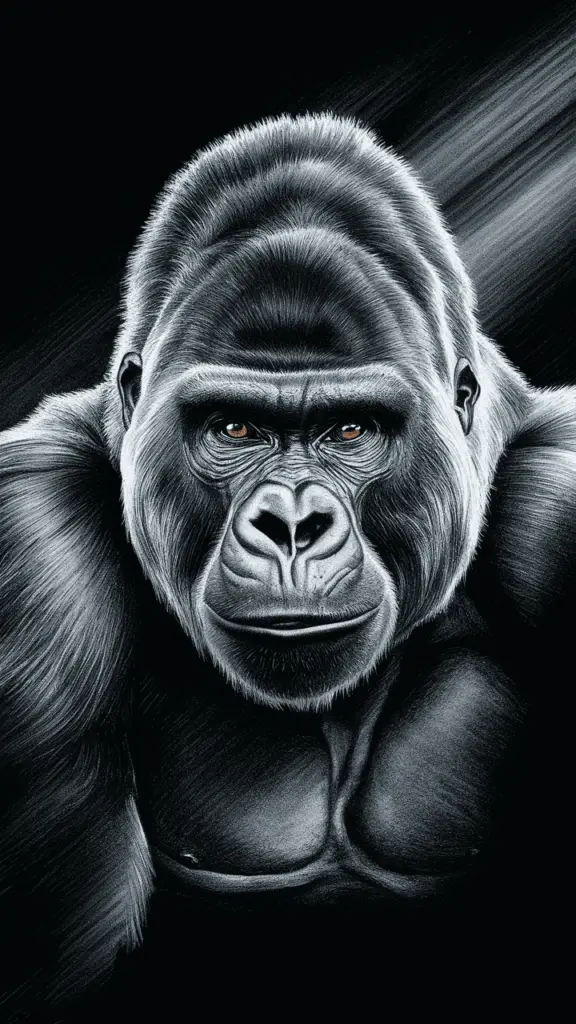
Gorilla art drawings capture the majesty and strength of these incredible creatures with exquisite detail. Artists often use a variety of mediums to bring out the unique features of gorillas, from their expressive eyes to the texture of their fur.
Many gorilla drawings showcase the powerful yet gentle nature of these primates. Through skilled use of shading and line work, artists can create lifelike images that evoke a deep connection with these animals.
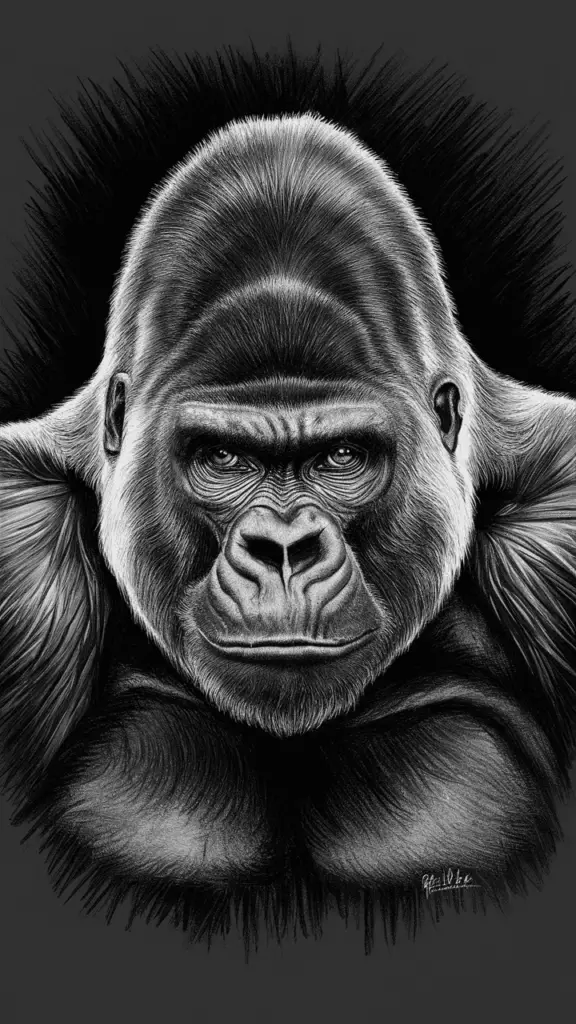
In some gorilla art drawings, the focus is on the social interactions within gorilla groups. These pieces often depict tender moments between mother and child or the playful antics of young gorillas.
Artists who specialize in wildlife often spend countless hours observing gorillas in their natural habitats. This dedication allows them to create drawings that are not only accurate but also filled with emotional depth.
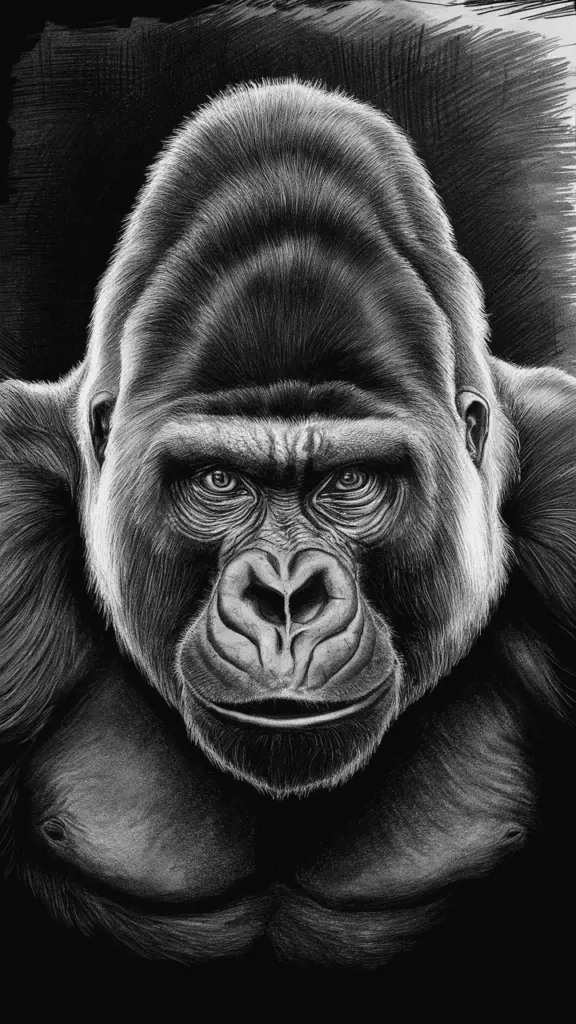
Gorilla portraits are a popular subject in the world of art, highlighting the individuality of each animal. These portraits can reveal a range of emotions, from curiosity to calm contemplation.
The use of different artistic styles can bring out varied aspects of gorilla personalities. Whether through realistic sketches or more abstract representations, each drawing offers a unique perspective on these fascinating creatures.
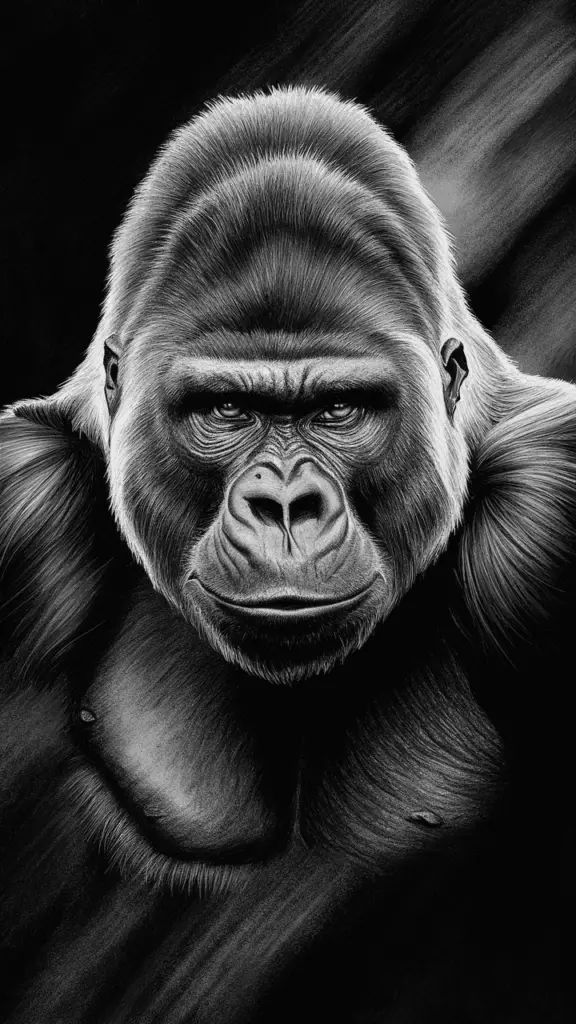
Some artists choose to portray gorillas in a more symbolic or stylized manner. These drawings often incorporate elements of fantasy or cultural symbolism, adding layers of meaning to the artwork.
By experimenting with color and form, artists can convey the spiritual or mythical qualities attributed to gorillas. Such creative interpretations can inspire viewers to see these animals in a new light.
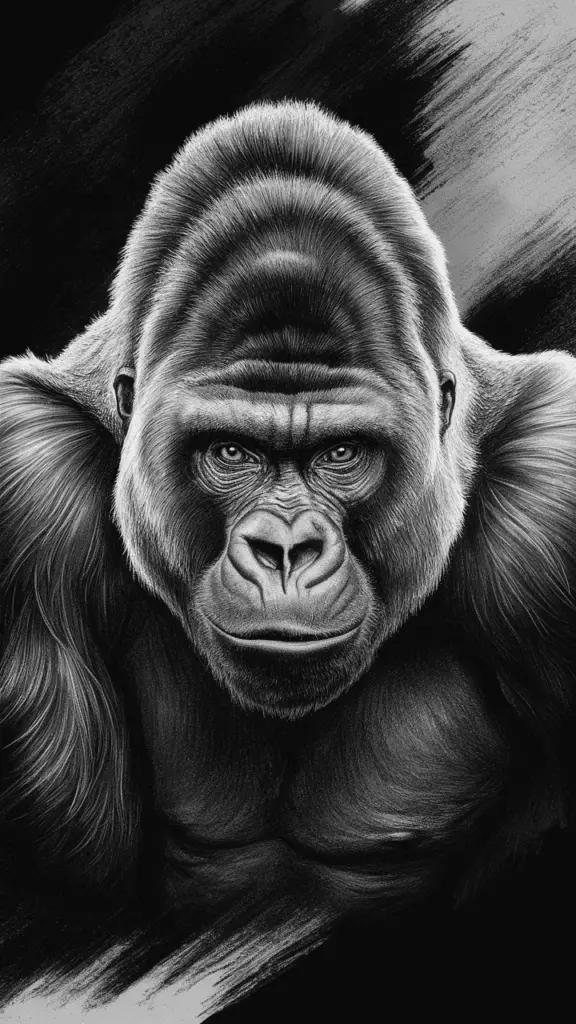
Detailed studies of gorilla anatomy are another common theme in art. These drawings can serve as educational tools, helping people understand the physical structure and capabilities of gorillas.
The precision required for anatomical drawings demonstrates the artist’s deep knowledge and respect for their subject. These works highlight the incredible design and strength of gorilla bodies.
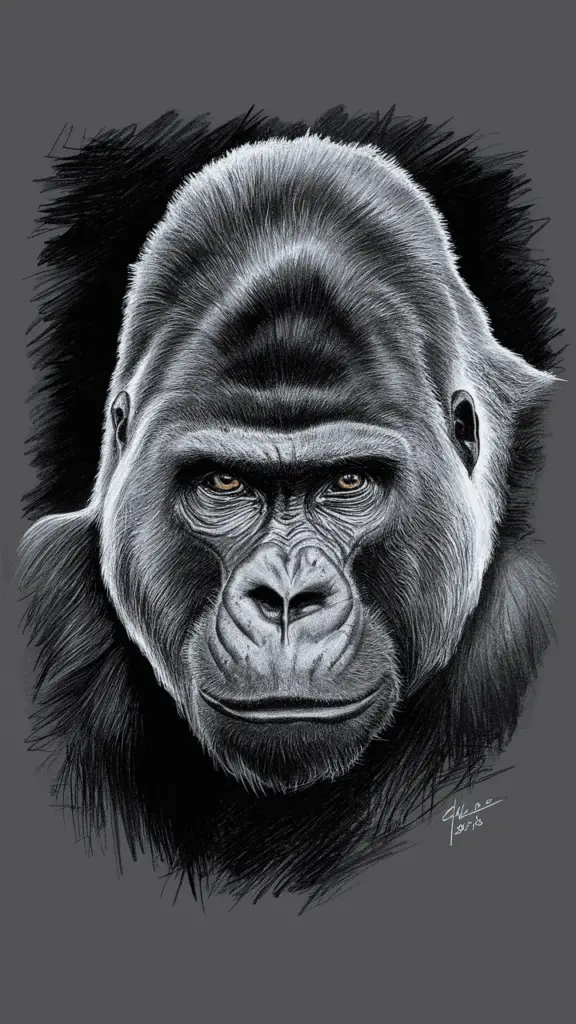
Gorilla art drawings often emphasize the importance of conservation. By showcasing the beauty and complexity of these animals, artists can raise awareness about the threats gorillas face in the wild.
Conservation-focused art can be a powerful call to action, encouraging people to support efforts to protect gorilla habitats. The emotional impact of these drawings can inspire a stronger commitment to wildlife preservation.
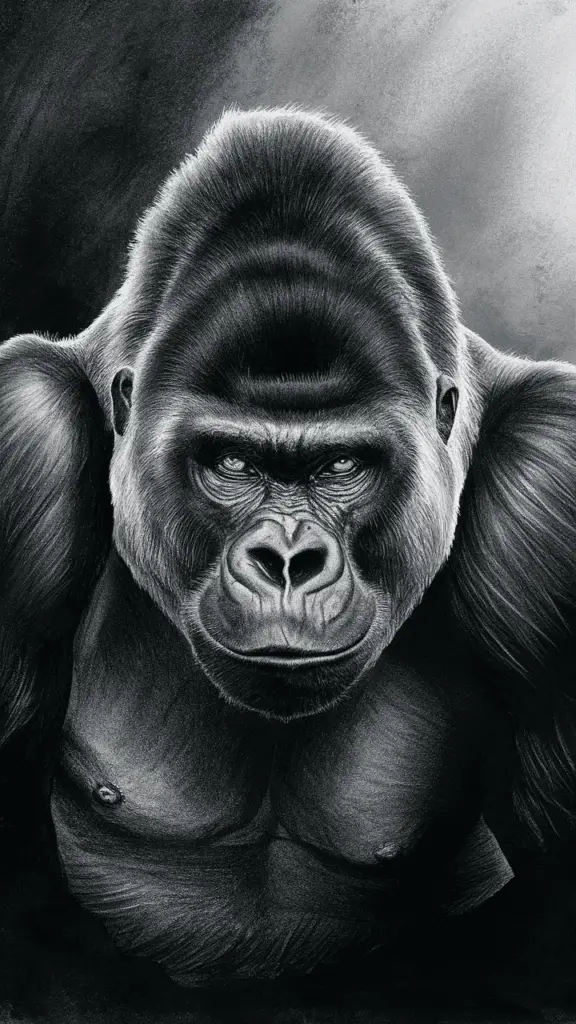
Some gorilla drawings capture the dynamic movement and energy of these primates. Action-oriented pieces might depict gorillas climbing, running, or interacting with their environment.
These dynamic drawings require a keen eye for motion and anatomy, allowing the artist to convey a sense of life and vitality. Such artworks can make viewers feel as though they are witnessing the gorillas in action.
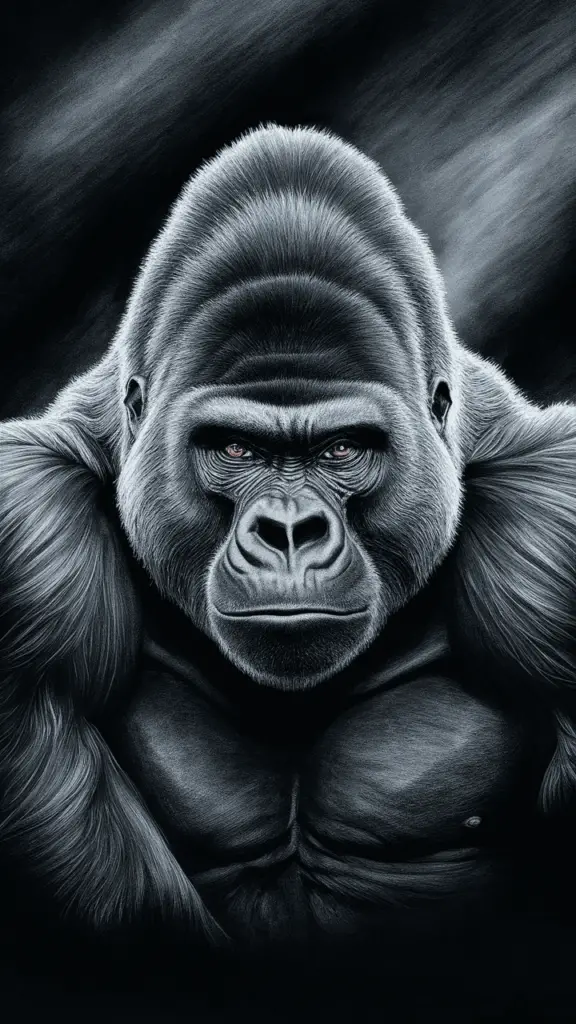
Artists often use light and shadow to enhance the realism of their gorilla drawings. This technique can create a dramatic effect, highlighting the contours and textures of the gorilla’s form.
The interplay of light and shadow can also evoke different moods, from the serene to the mysterious. By mastering these elements, artists can add depth and dimension to their work.
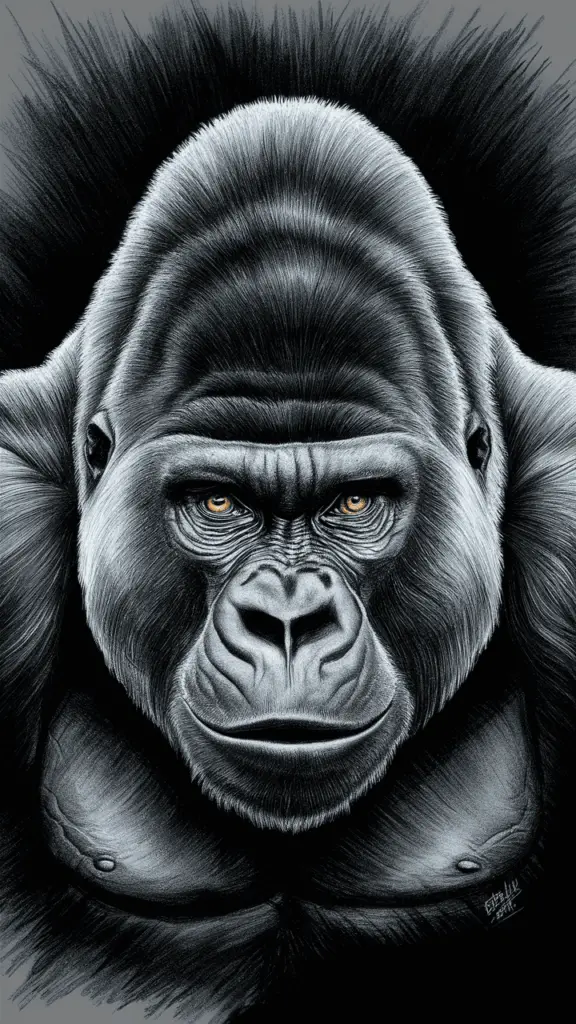
Gorilla drawings that focus on habitat and environment provide a broader context for these animals. These pieces might include detailed backgrounds depicting the lush forests and diverse landscapes gorillas call home.
Including the natural environment in gorilla art helps to emphasize the connection between the animals and their surroundings. It also underscores the importance of preserving these habitats for future generations.
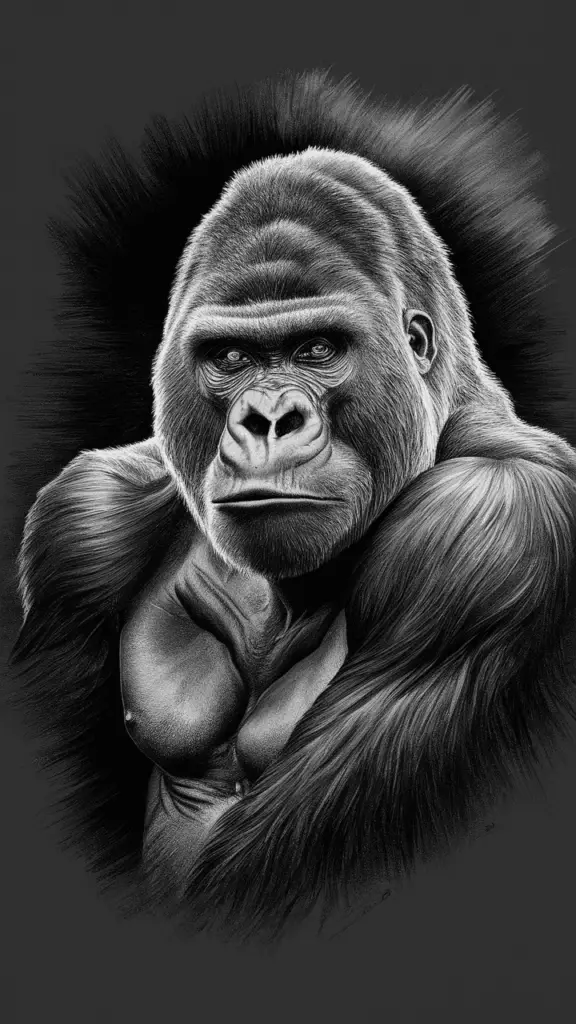
Some gorilla art drawings explore the relationship between humans and gorillas. These works can highlight our similarities and shared experiences, fostering a sense of empathy and understanding.
By depicting moments of interaction or parallel behaviors, artists can bridge the gap between species. Such drawings can remind us of our responsibility to protect and coexist with these magnificent creatures.
